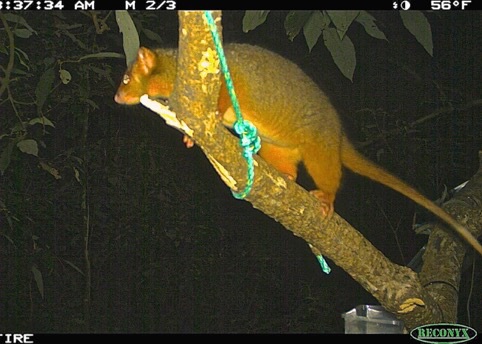Location: CWCN Centre – 47 Hepworth St Chapel Hill
Type: Activity for children 6-11 years
Organiser: Cubberla-Witton Catchments Network Inc
Contact: Contact: www.cwcn.org.au – www.facebook.com/cwcn.org.au
Click here to view the flyer: {module_literature,i,177046}
Birds in tunnels
We have two WONDERFUL articles guaranteed to fascinate … They reveal the curious parenting and foraging behaviours of the Striated Pardalote.
Jim Butler’s September issue of Feather Fascination provides a very interesting read: {module_literature,i,176534}
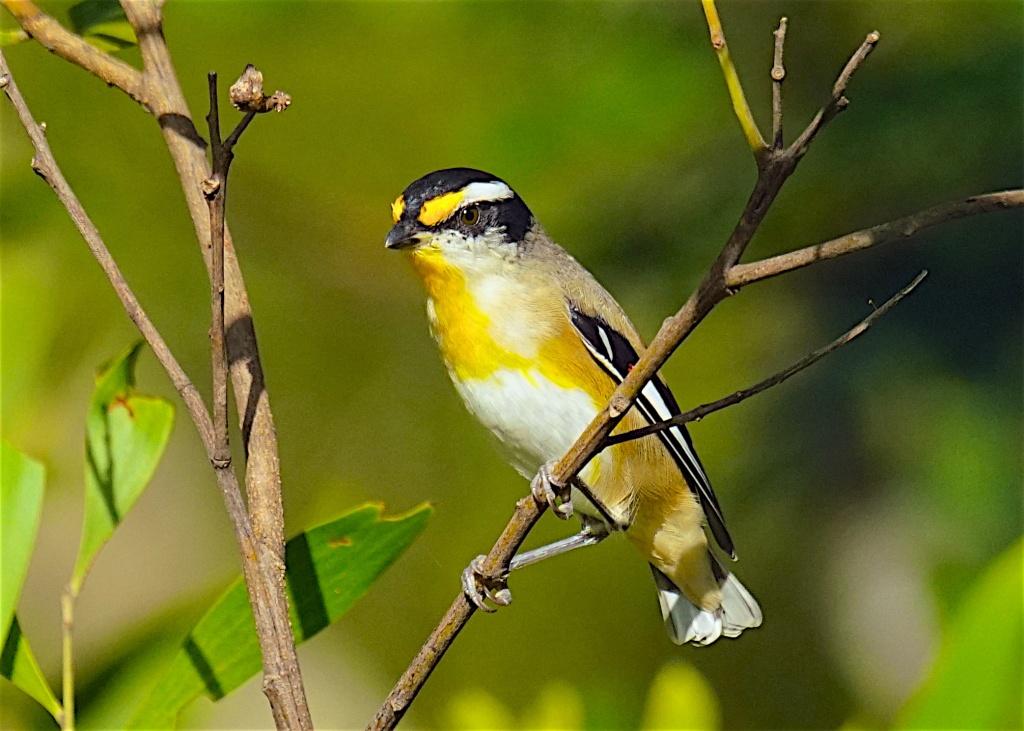
And if you’d like to see some amazing photos from Ed Frazer, together with an account of his experiences photographing two Striated Pardalotes in a tunnel on his Brookfield property … click here !
.
Nightlife in the Catchment – Ed Frazer
During the past eight years I have been using several trail cameras around our property. This has greatly expanded my appreciation of the wildlife which lives alongside us.
Over the 44 years we have been here I have regularly seen during daytime red-necked wallabies, hares and water dragons. I have occasionally seen possums, platypus, koalas and antechinus, but the cameras have revealed a whole lot more going on during the night.
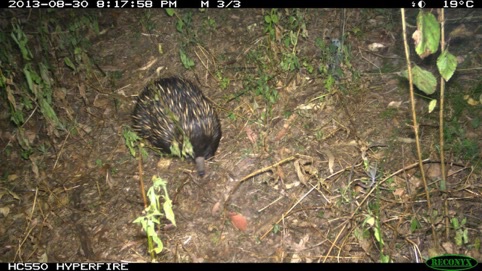
I use a number of different cameras and many of them are white and some infra-red flash. They are all triggered by infra-red. The quality of the photos has improved considerably with the most recent models taking 16 megapixel photos.
My method of viewing nightlife is to select an interesting habitat area and set a few cameras up targeting where I think the animals may have regular tracks or on branches I think might be used as perches. Transition zones between bush and open areas are another target. Every few days I swap the cards in the cameras and review them on my computer to see what I have photographed.
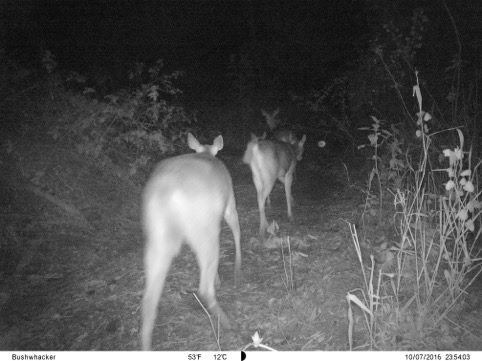
As most of our animals are nocturnal I have seen so much more than I expected. It is the insight into their night life that is interesting as they go about their normal behaviour without being frightened by my unexpected presence.
It is not just the animals.
I have found the regular habitat of a number of very cryptic birds that are seldom seen during the day. Shy species such as Russet-tailed thrushes, Noisy Pittas, Lewin’s Rails, Spotless Crakes and Little Grassbirds are usually well gone before they are seen during daytime.
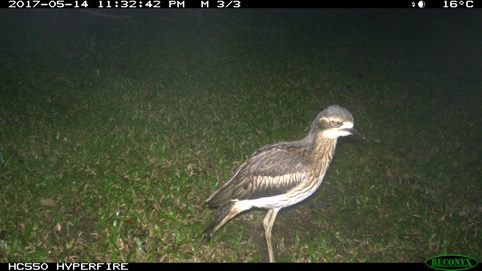
Once I have found their hangout I set up a hide and this allows me to photograph them with my good camera. I have also been able to see nocturnal birds such as Bush Stone-curlews going about the normal business instead of looking like statues as they behave during daylight.
The cameras also show me there are a lot more feral animals than I had realised. Foxes, deer, dogs, hares and cats are photographed by the trail cameras almost daily.
Here are a few more examples of the nightlife that occurs on my property:
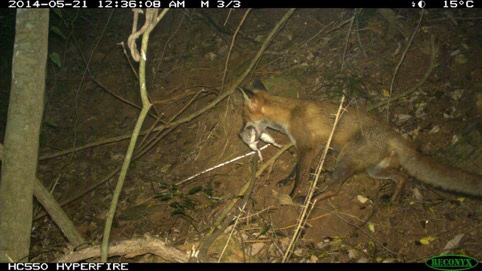
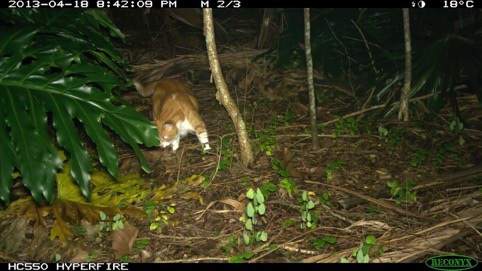
Birds in tunnels – the Striated Pardalote – Ed Frazer
It has been an interesting exercise getting photos of Striated Pardalotes breeding in their tunnel in the embankment on my property during August 2017.
It’s breeding season now – time for these birds to drill their 1metre-long tunnels into embankments.
These three shots, taken on 20 August, show the male and female pardalotes arriving at, sitting inside and departing from their tunnel:
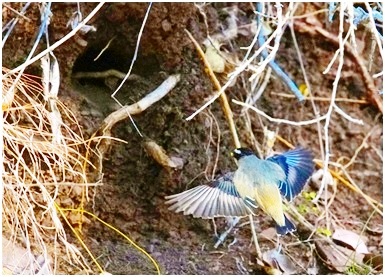
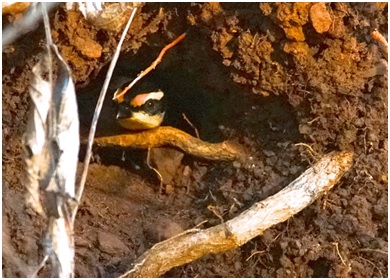
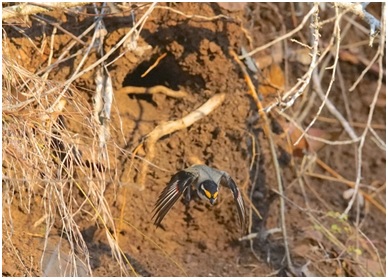
I’ve been watching these Striated Pardalotes for about 2 weeks and it seems they are now starting to feed their young. It’s interesting to note that they never call when they are anywhere near the nest, even when searching for food.
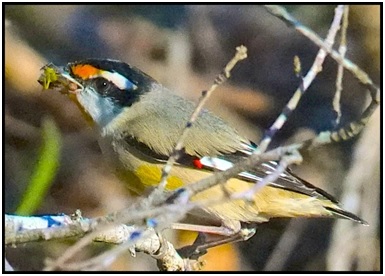 |
Returning to the tunnel with food for the chicks – August 2017 |
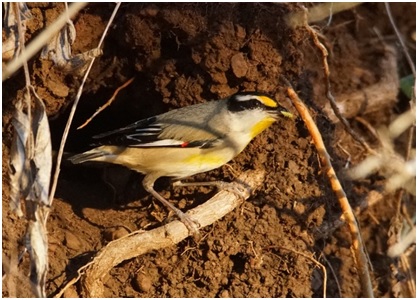
I believe the pardalotes communicate by emitting very quiet sounds when they fly in to swap patrols. Obviously they can’t see when the other is inside the tunnel so they must have a way of communicating when each one returns. I have tried to hear them, as my viewing spot is only about 7m away, but to no avail – the call must be either extremeley faint or the register is too high for the human ear.
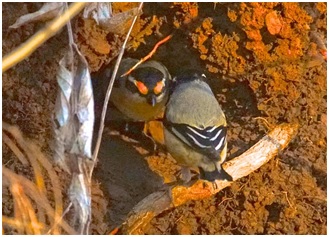 |
Parent changeover (8 August 2017) |
The parents seem to mainly return with lerps or psyllids, but I have also seen them arriving with small grubs. I can see the white lerps oozing out of their beaks.
Generally, one stays in the tunnel cavity whilst the other is out collecting, but sometimes they travel together or occupy the tunnel together for short periods.
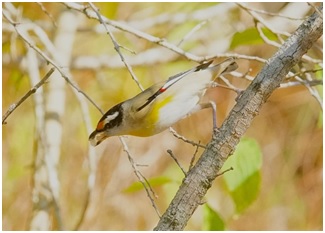 |
Pardaote with lerp (20 August 2017) |
I imagine the parents would have to keep the nest cavity clean, given that it is inside a tunnel. The following photo seems to support this theory:
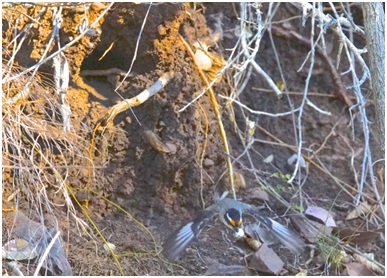 |
Removing a faecal pellet from the tunnel (20 August 2017) |
I believe these final two photos show the parents trying to entice the young to leave the nest (taken on the morning of 18 August).
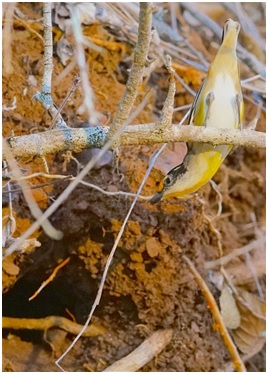
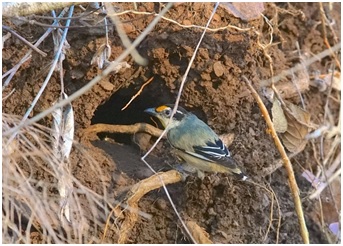
Note: You can learn more about the Striated Pardalote by reading Jim Butler’s Feather Fascination September 2017.
IT’S HOLIDAY TIME !!!
Fun activities are waiting for all budding scientists and young lovers of nature!
 |
There will be something to please children of all ages and interests! Hands-on involvement as well as crafts and storytelling …. Lots of action and fun-filled learning for a variety of age groups. |
MCCG 20th Anniversary Photo Book – Call for Photos
We need your very best Catchment photos!
As part of the celebrations for our 20th Anniversary, MCCG plans to produce a photo book. It will contain about 60 pictures and text to describe the history, achievements, community involvement, the beauty of our catchment and its environmental challenges.
We’re particularly after photos of early catchment group activity, and especially before and after photos of restoration work started in the early days of MCCG. Photos showing the catchment and MCCG activities, such as working bees, restoration work, MCCG members (particularly those who started MCCG), flooding events, and catchment flora and fauna will all be useful.
Submitting photos: – please have these to us by 22nd September 2017
| Digital Photos | Email to the MCCG Secretary [email protected]. Each photograph will be acknowledged |
| Non-digital Pictures | Post to the MCCG Secretary at PO Box 657, Kenmore 4069. The photos will be scanned and the originals returned, if a return address is provided. |
A rare shot
September 2017 marks the first time the Red-capped Robin has been photographed in our Catchment!
Ed Frazer took the magic shot on Wednesday 6 September.
Click here to view the photo in our Classified Bird List.
 Handy Hint: Press Ctrl + F, then type Red-cap to search for the robin.
Handy Hint: Press Ctrl + F, then type Red-cap to search for the robin.
Wildlife Matters Symposium
Location: Riverside Receptions, 50 Oxlade Drive, New Farm
Type: Event
Organiser: Wildlife Preservation Society QLD
Contact: 3844 0129
Please contact WPSQ directly for more information by phoning them on (07) 3844 0129, or visiting their website.
Save the Koala Day
Location:
Type: Event
Organiser: Australian Koala Foundation
Contact: AKF (07) 3229 7233
DO YOU LOVE KOALAS? DO YOU WANT TO HELP SAVE THEM? CELEBRATE SAVE THE KOALA DAY!
For more info visit the Australian Koala Foundation Website or the Save the Koala Day Facebook page.
Wildlife Matters Symposium
The Wildlife Preservation Society of Queensland is hosting an afternoon and evening symposium and dinner with celebrity guest speaker John Dee on Saturday 9 September.
Hear wildlife experts and activists speak from their experience on how the climate of change we currently face is impacting Queensland’s iconic plants, animals and ecosystems.

Please contact WPSQ directly for more information by phoning them on (07) 3844 0129, or visiting their website.


